Rare hosts beware! Love vine not so loving for endangered Lakela’s mint
Bok Towers Garden
Main article contributed by Cheryl Peterson, Conservation Program Manager
Plant Dating Profile: Love Vine
Name: Cassytha filiformis
Location: Florida, pantropical
About me: Some cultures from the Caribbean call me love-vine because, apparently, they think I have aphrodisiac qualities. I don’t know about that, but I like the name regardless… I’m pretty loving (though some may say smothering).
Looking for: I’m open to lots of possibilities – rare plants not excluded. I mostly cling to woody plants for their support – but don’t mind attaching to herbaceous hosts. I’m also open to connecting with many plants at the same time.
Not everyone can handle me, I demand a lot of my hosts, and unfortunately, some just don’t make it.
Likes: You can find me in the Caribbean, Africa, Australasia, just about anywhere with a coastal area in the tropics. I really love the chance to grow in the warm summer months of Florida!
Dislikes: Being confused for dodder – we’re not even in the same family! Also, volunteers removing me from their precious rare plants – can’t they mind their own business? Being called greedy or a mooch… apparently some people don’t appreciate me draining my hosts of water and nutrients, but I’m just taking what I deserve.
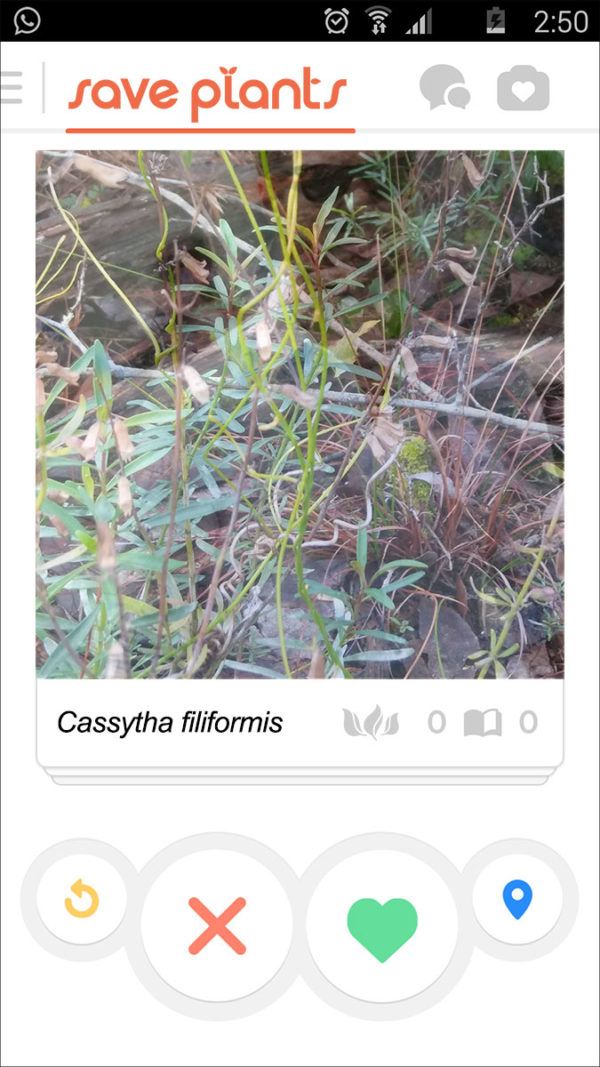
The endangered Lakela’s mint (Dicerandra immaculata) is known from only one natural population. This population exists in just five scattered fragments of remaining scrub habitat along a three-mile stretch of the Atlantic coastal ridge along Florida’s southeast coast. Millions of years ago, the different ridges of Florida were formed by rising and falling sea levels, and during periods of high sea levels, plants and animals began to adapt to, and then require, the special habitats that developed. Many species like the Lakela’s mint are historically known from just one ridge system and nowhere else in the world. However, because these elevated, sandy areas are also prime locations for development and citrus groves, many of their endemic species continue to be threatened and are critically imperiled. Most of Lakela’s mint habitat has been destroyed by development, and preserving habitat quality for the remaining populations is vital to its survival.
Scrub was historically subjected to periodic wildfires, which maintained both the canopy and sand gaps characteristic of this unique habitat. Unfortunately, Lakela’s mint now finds itself in an urban environment and their sites are thus difficult to manage by fire. As a result, even the protected populations have experienced heavy overgrowth of both native and invasive species.
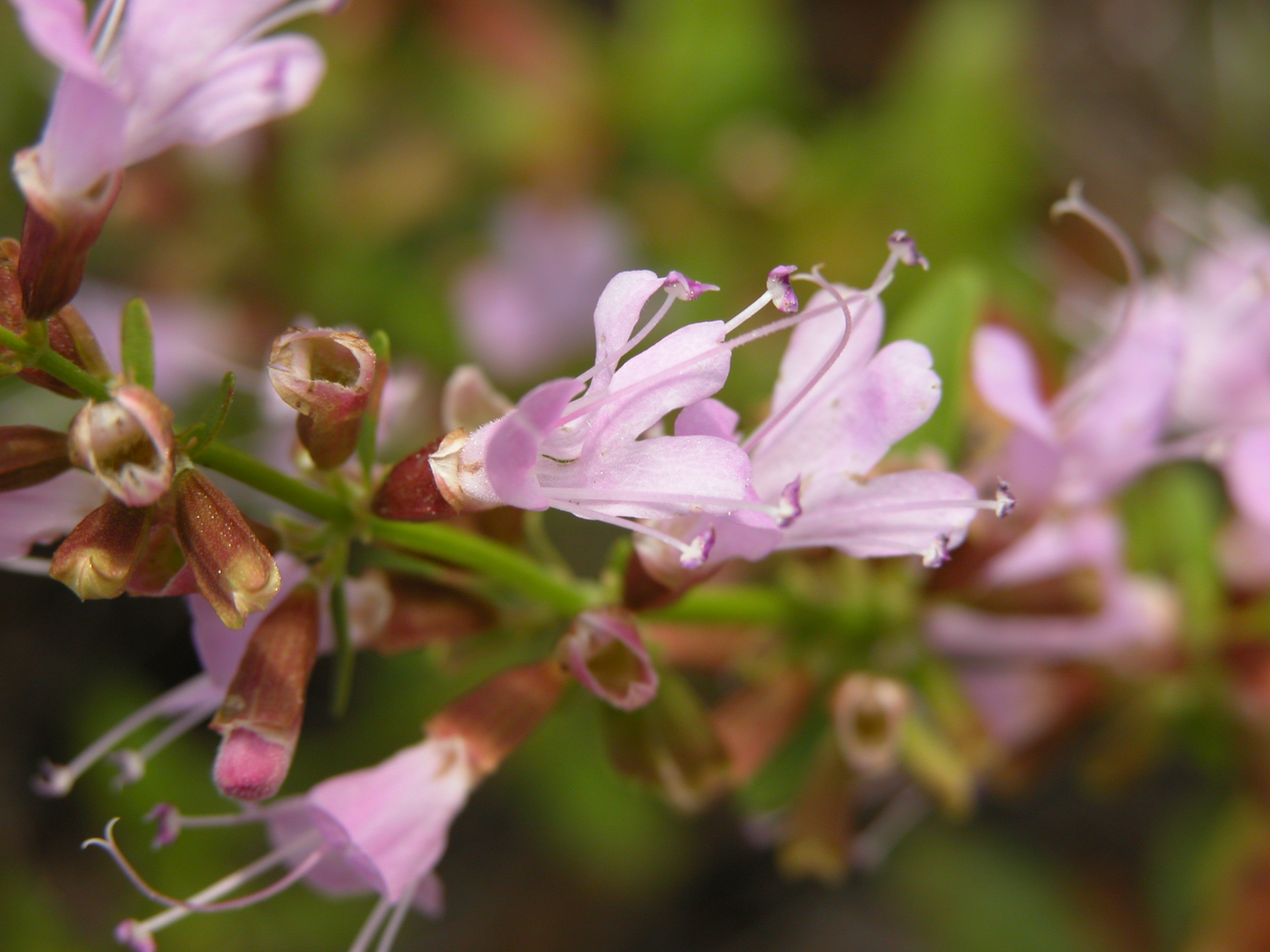
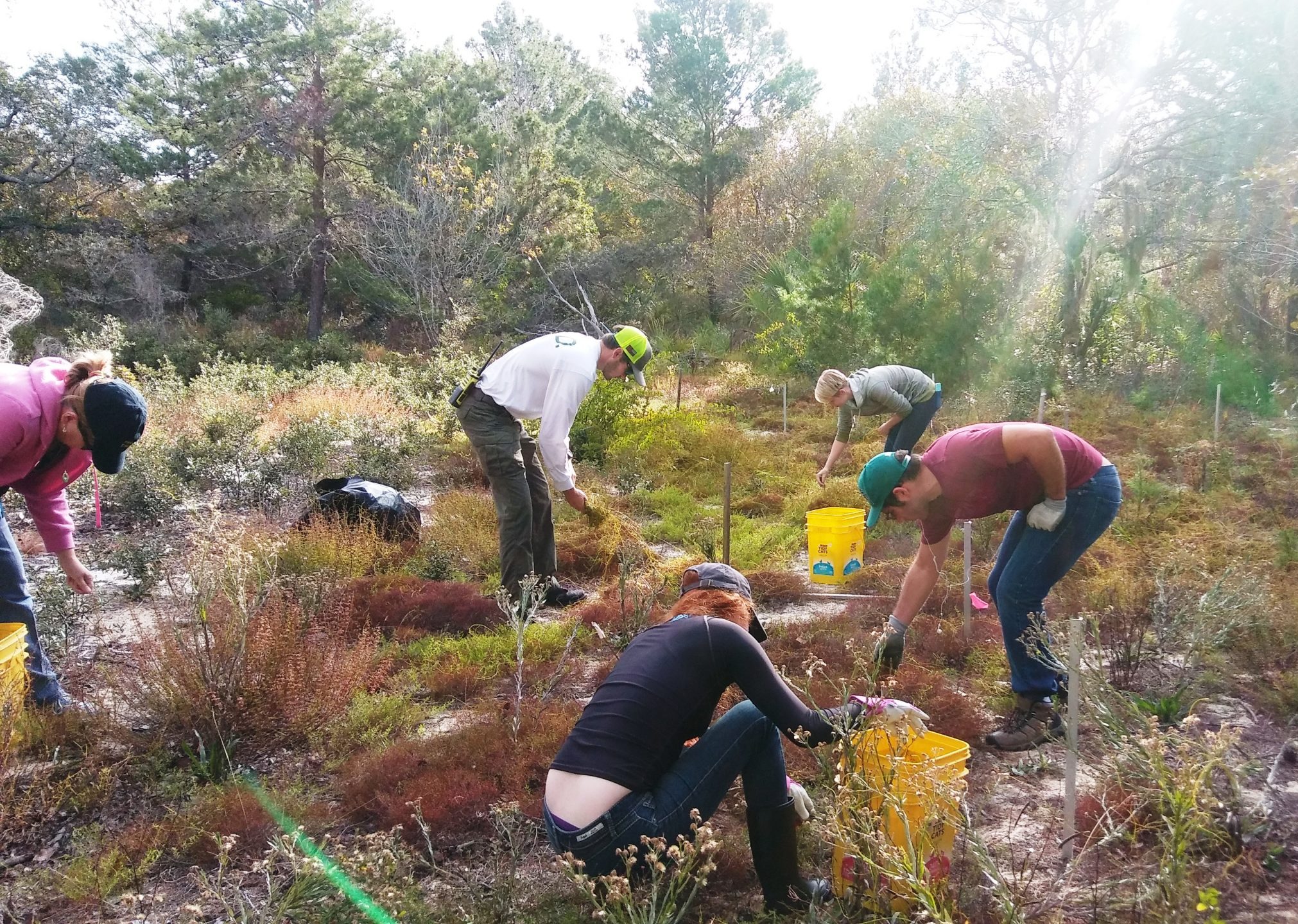
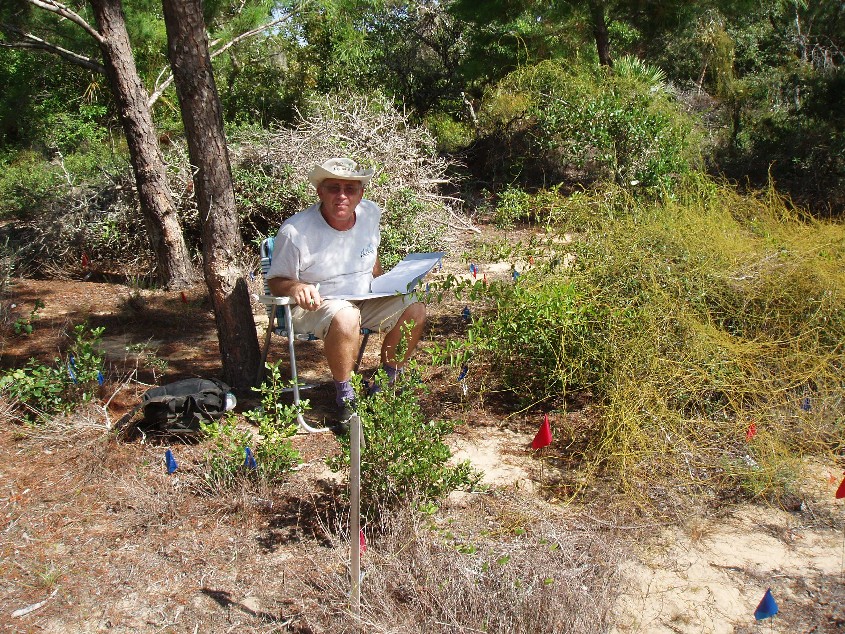
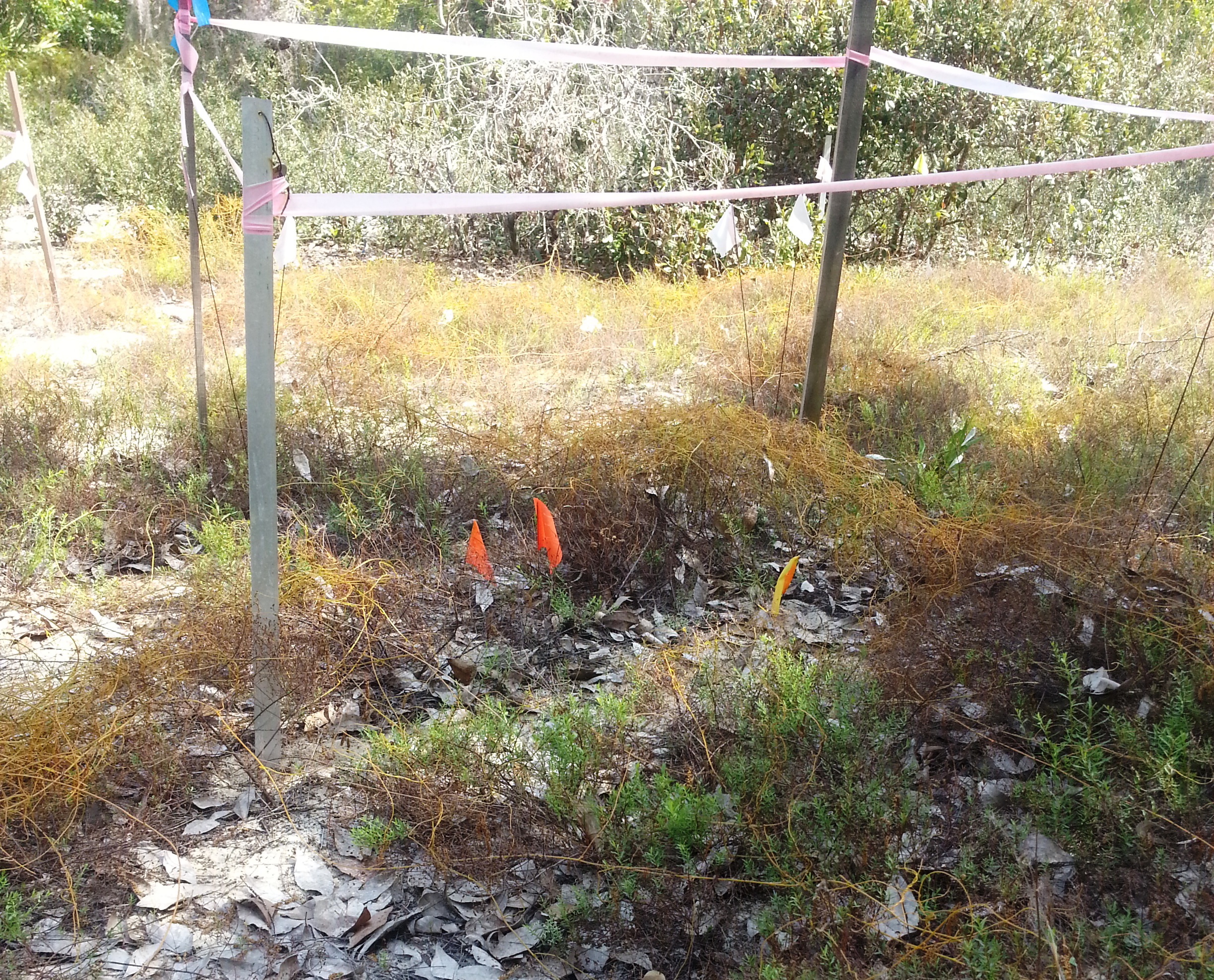
One of the biggest threats to the survival of Lakela’s Mint is the love vine, Cassytha filiformis. The love vine is a leafless, climbing vine in the Lauraceae family which parasitizes a wide variety of plants throughout the tropics and subtropics worldwide. It has orange-green stems, is a perennial, spreads both vegetatively and through seeds, and rapidly grows into thick mats following the summer rainy season. It relies on other plant species for physical support, water and nutrients. It uses its haustoria to extract vital nutrients – and starve the host. Some species are more vulnerable to the love vine than others. Lakela’s mint is unfortunately extremely vulnerable, and large expanses of mints have perished within weeks of encroachment by love vine. While love vine may have minor impact on a few individuals of other species, for Lakela’s mint, it poses a major threat.
In lieu of fire, which historically helped control the spread of the love vine, Bok Tower Gardens and St. Lucie County now organize monthly half-day volunteer events to remove the love vine by hand. The vine is tediously picked from mint stems, and large handfuls are pulled from surrounding vegetation. All pieces of the vine, no matter how tiny, are diligently placed into bags that are then removed from the site, in order to prevent re-infestation. During the first event in 2017, ten volunteers removed 12 large yard waste bags full of love vine from the mints in less than two hours! Since then, love vine has been cleared from more than two-thirds of the mint population, and mint survival has drastically improved. However, because it can repopulate an area in just a few short months, ongoing, regular efforts to remove the love vine will be required to ensure survival of the Lakela’s mint.
Unhealthy relationships are hard to break free of and, in the case of love vine and this rare mint, it is going to be ongoing process. Fire isn’t likely to return to the habitat on a regular basis. Fortunately for Lakela’s mint, Bok Tower Gardens and their volunteers are dedicated to helping these lovely shrubs keep the love vine at bay.